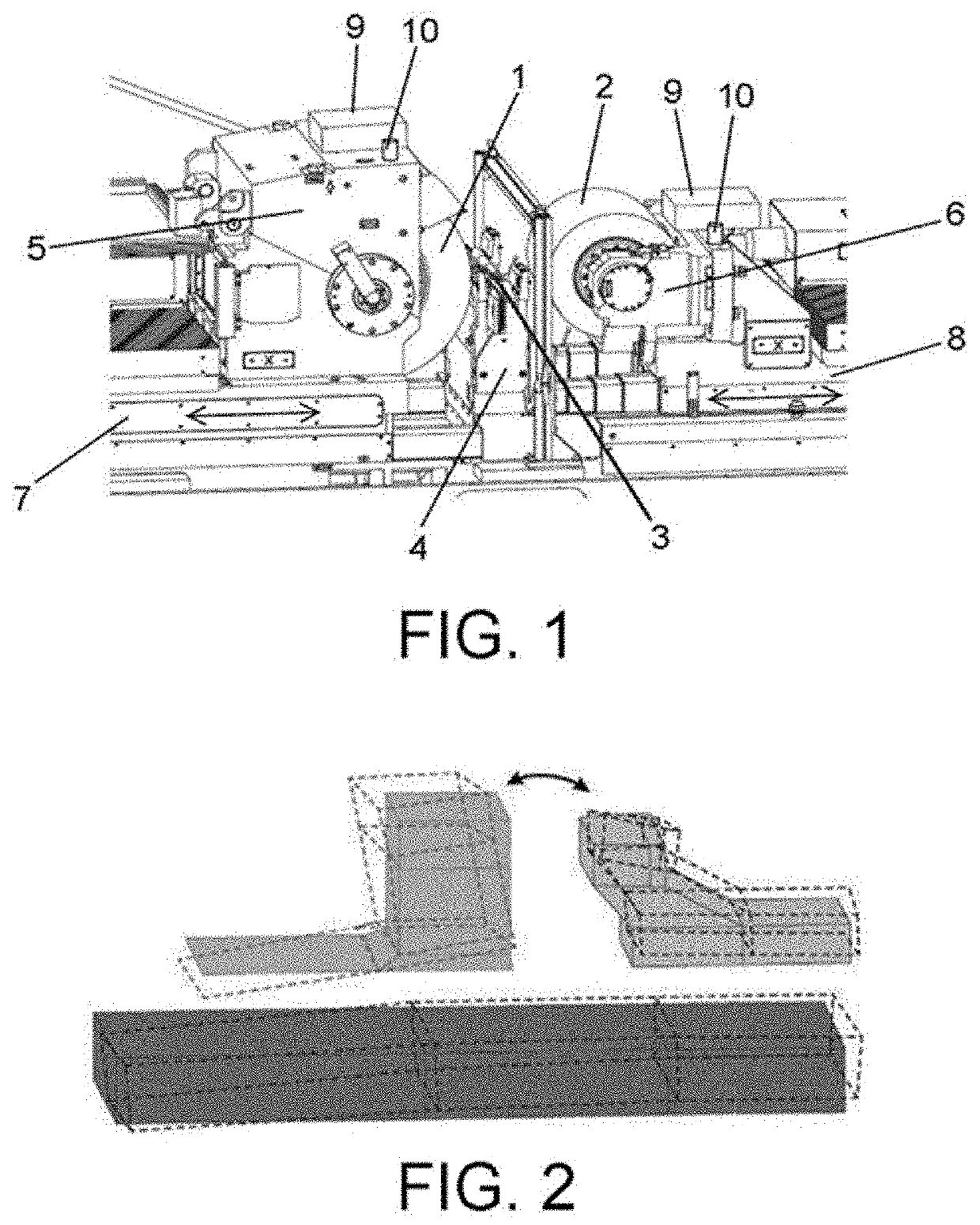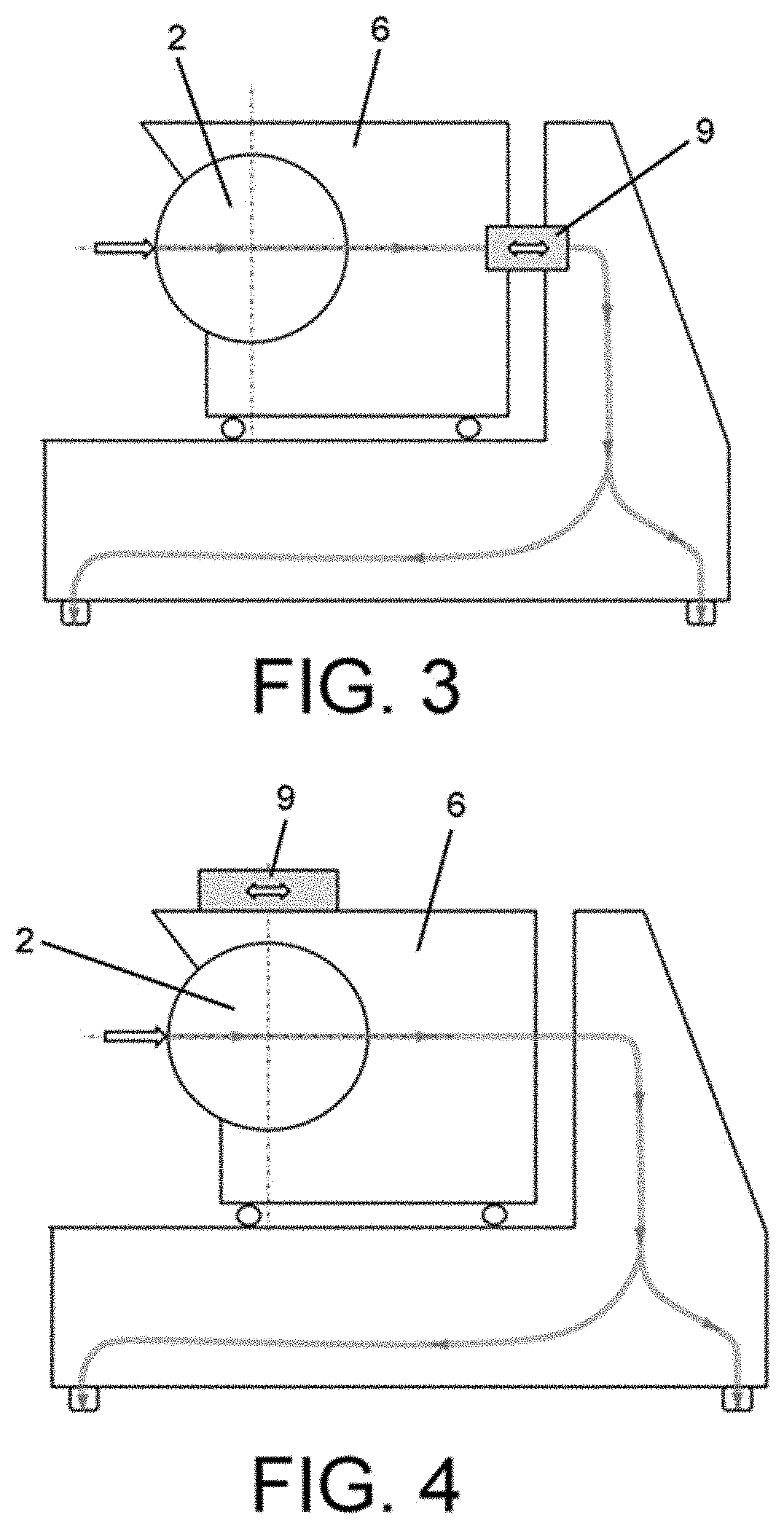Actively dampened centerless grinding process
a centerless grinding and active damping technology, applied in the field of grinding parts, can solve the problems of increasing the force of the grinding process, requiring bulky actuators, and constant vibration of the machine, so as to improve the grinding precision
- Summary
- Abstract
- Description
- Claims
- Application Information
AI Technical Summary
Benefits of technology
Problems solved by technology
Method used
Image
Examples
Embodiment Construction
[0044]FIG. 1 shows an example of a centerless grinding machine in which the grinding process of the invention can be applied. The grinding machine comprises two wheels (1, 2), a grinding wheel (1) and a regulating wheel (2), between which there is arranged a part (3) to be ground supported on holding means (4). Each wheel (1, 2) is arranged in a head (5, 6) and each head (5, 6) is arranged on translation means (8, 9).
[0045]The machine configuration depicted in FIG. 1 is not limiting for the invention, where it is obvious for one skilled in the art that the grinding process may be applied in centerless grinding machines with a different machine configuration.
[0046]By means of the movement of the heads (5, 6), the wheels (1, 2) move closer to / farther away from one another in a direction perpendicular to the part (3). Therefore, in operation, the wheels (1, 2) apply pressure on the part (3) in the direction in which the wheels (1, 2) move closer to one another, such that the part (3) i...
PUM
 Login to View More
Login to View More Abstract
Description
Claims
Application Information
 Login to View More
Login to View More - R&D
- Intellectual Property
- Life Sciences
- Materials
- Tech Scout
- Unparalleled Data Quality
- Higher Quality Content
- 60% Fewer Hallucinations
Browse by: Latest US Patents, China's latest patents, Technical Efficacy Thesaurus, Application Domain, Technology Topic, Popular Technical Reports.
© 2025 PatSnap. All rights reserved.Legal|Privacy policy|Modern Slavery Act Transparency Statement|Sitemap|About US| Contact US: help@patsnap.com



